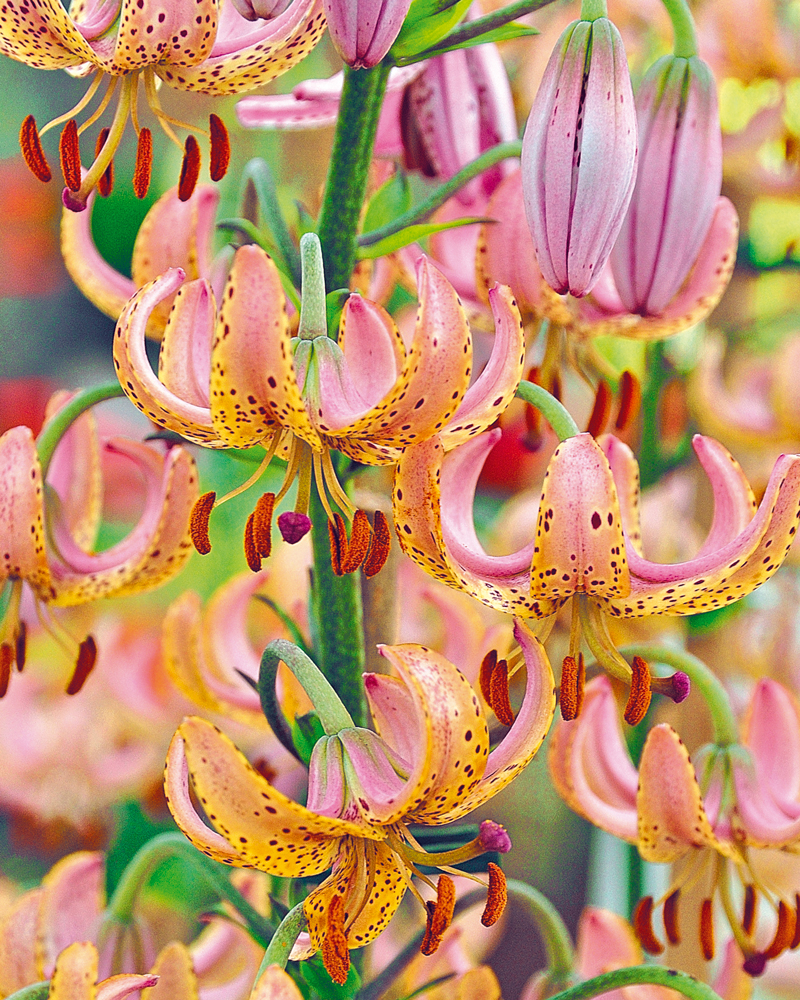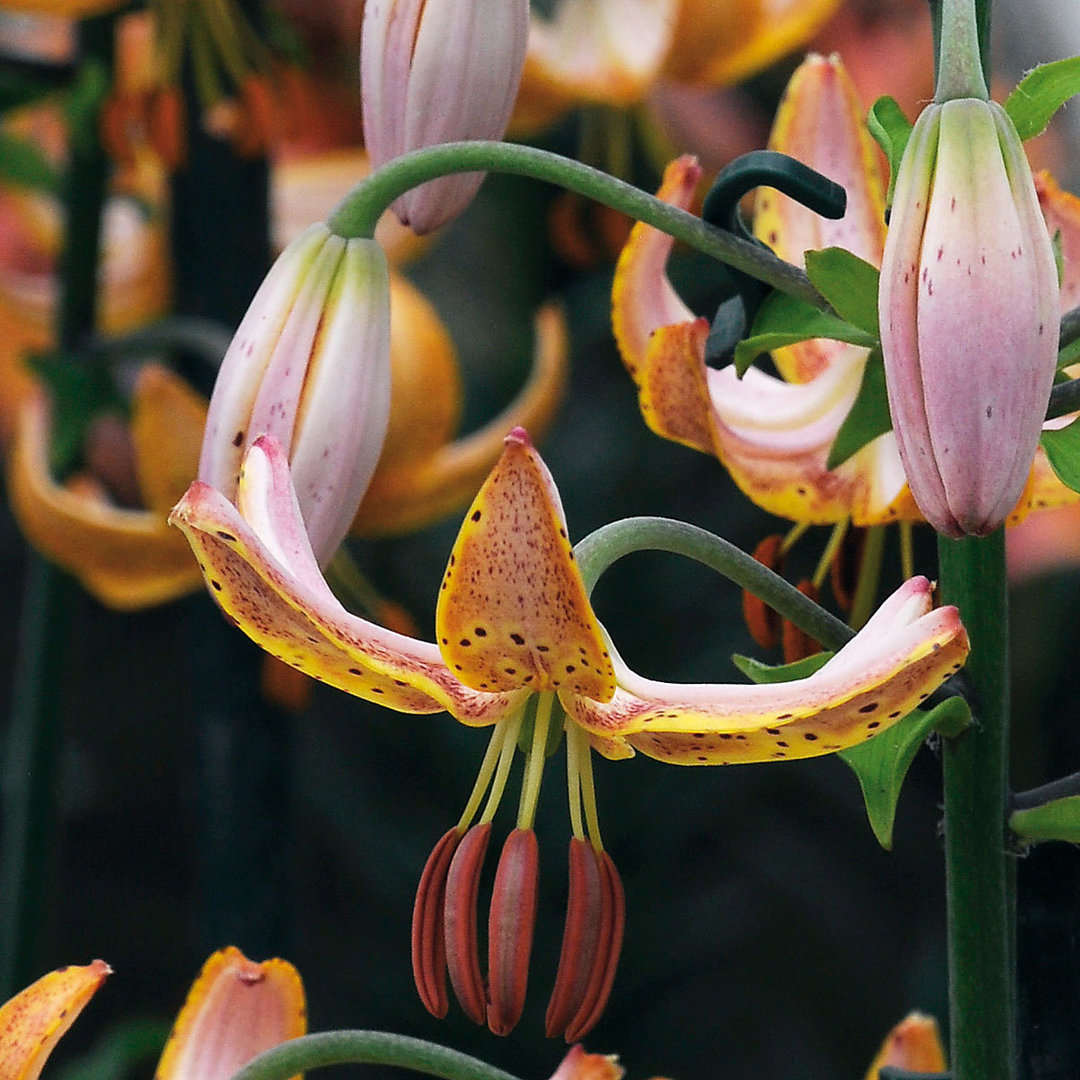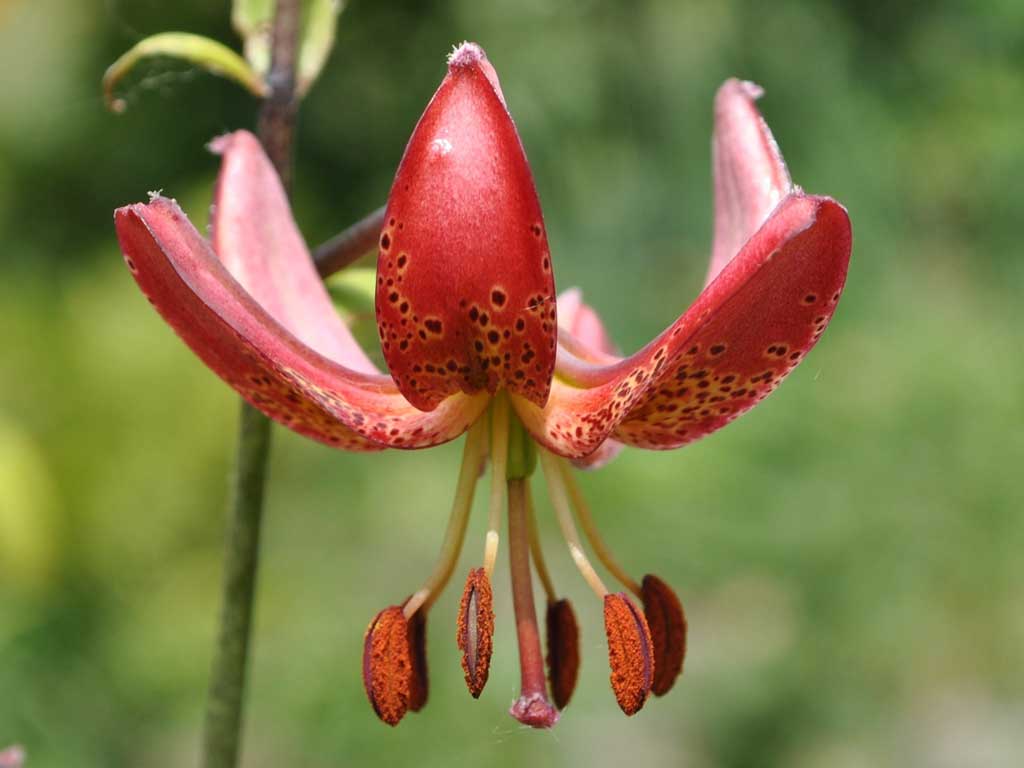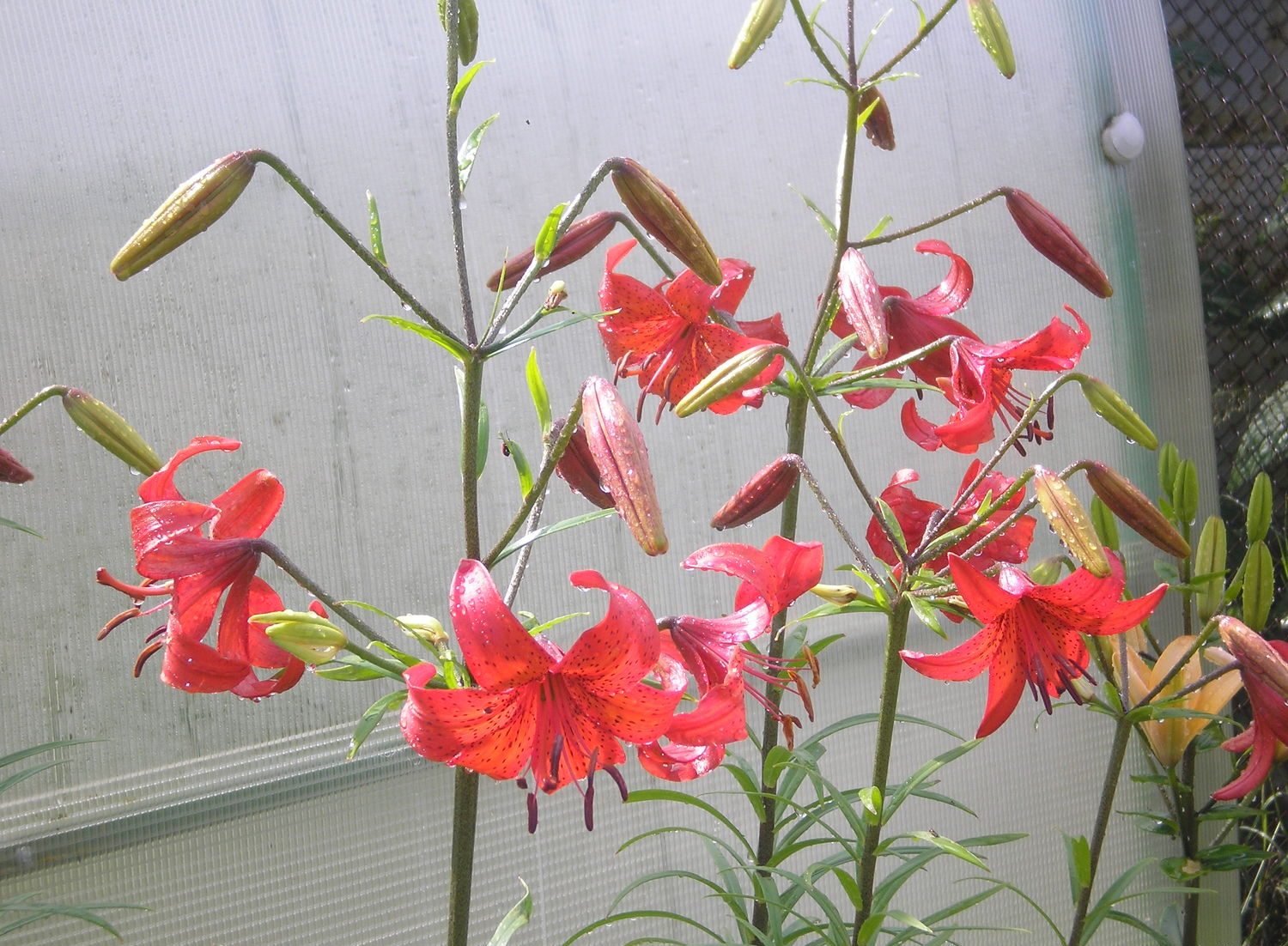Content:
Curly lily Martagon is considered a unique perennial plant that is highly resistant to frost seasons, various diseases and harmful insects. The first time such a lily was seen by Europeans was in the Middle Ages. The beauty and unpretentiousness gave the plant the opportunity to spread widely in different parts of the Earth and win the love of flower growers. Initially, all the lilies of the variety were white, and later more than two hundred of its varieties and hybrids were bred.
Description
The flowers are tall, up to 2 meters in height, have strong, powerful stems and glossy leaves of considerable size. A distinctive feature of this lily is its medium-sized flowers, which, when blooming, tilt down from the stem. They have significantly curled petals, which resemble curly curls.
Martagon is a type of lily that grows quickly and resembles a shrub in shape. Its branches are planted high on flower stalks, each of which contains 20 to 50 attractively bright flowers with black spots scattered from the beginning of the petal. These flowers grow even in the shade, where direct sunlight rarely falls on them.
These lilies are decorative. It is believed that they can be placed on any flower bed. The location of Martagon can not be changed until 20 years. As for the bulbs, they can last for as long as 6 decades. If the lilies are cut and placed in a vase of water indoors, the flowers will last for a long time. However, it must be remembered that their sweet, even sugary smell can cause headaches.
Kinds
The vast majority of such lilies grow in favorable climatic conditions (Canada and Holland). However, the result of the work of breeders in recent years allows Martagon to be grown in any garden or flower bed. The most common and original in nature are only 8 species of this lily.
Morning
One of the rarest hybrids - the Manitoba Morning lily - is about 1 m 20 cm high. It is especially frost-hardy and shade-tolerant. Its flowers are from 8 to 10 cm in diameter, strongly curved with petals in a speck. At the tips, the shade of the flower is pinkish, and in the middle part it is bright yellow. Manitoba morning is a hardy lily. This indicates the possibility of cultivating it in the northern regions of Russia.
Guinea gold
Guinea gold - lily reaches one and a half meters in height. There are many buds on its branches. Each stem can produce up to 50 flowers 7 to 8 cm in diameter. The petals are bright lilac above, and yellowish-pink below. The veins on the edges of the petals are light, with dark orange bases. This species blooms for a long time and abundantly.
Manitoba Fox
In height, the Manitoba Fox lily grows up to 1.5 m, and its flowers - from 6 to 6.5 cm in diametrical dimension. Their color goes from pink to red, the base of the petals is yellow with red blotches. The leaves on the branches are large and shiny, evenly distributed over the stem.
Suitable place for disembarkation
The unpretentious Martagon lily grows well mainly in the shade: under a tree, next to a shrub, in other places with a lack of sunlight. However, if the lily is planted in direct sunlight, the stems will not grow long and the flowers will not be as bright and smaller than usual.
Flowers love loamy soil with zero acidity. The bulbs are buried to a depth of 20-25 cm, which means that the planting hole must be deep (up to 0.5 m) and sprinkled with a specially prepared substrate.
The best time of the year to plant the Martagon lily on your site begins at the end of August and ends at the beginning of September. When planting bulbs in the spring, the lily will bloom only next year. The first seedlings of the bulb appear on the days when the snow has just begun to melt. These leaves are still afraid of frost, at first they need a warm shelter.
How to prepare the ground
At the future place of growth of lilies, there should be loose, dug up soil in advance. It is better to do this with a plow so that the depth is 2-3 bayonets of a garden shovel. The earth is selected from the depression, separating the top layer and laying it on the bottom of the hole. On top you need to pour mineral fertilizer - 150 g per sq. m. and add another 8-9 tbsp. spoons of bone meal. Wood ash is needed in the same amount, then add 2 buckets of ready-made animal manure.
Before planting, the bulbs should also be treated, for example, with Fundazole solution. Then a small elevation is made in the hole, an onion is placed on top, after having straightened the roots. From above, all this is covered with soil from the same hole. At the end, the soil is put on the surface, mixed with compost, and watered. All of the above is done for soil fertility.
Planting lilies in open ground
It is very long and laborious to grow lilies from seed, even young bulbs grow extremely slowly in open ground. After the bulb has been planted, for the first time it will give only one shoot, which will not be higher than 0.2 m.Sometimes it happens that even such shoots have to wait 2 years, because the vitality of the lilies is directed to the growth and strengthening of the rhizomes.
Regular care and maintenance during the growing season
Martagon does not need special care - he will grow up anyway, in any conditions. But to preserve decorativeness, such flowers require proper watering and sometimes - feeding. There is no need to overmoisten the soil, on the contrary, watering should be as moderate as possible, otherwise the bulb is threatened with the appearance of fungi. After planting, fertilize the soil with Martagon lily only after 2-3 years. It is better to feed the lily for the first time before the first green leaves sprout. By the way, ammonium nitrate and humus are best suited for this.
Fertilizer must be applied before the lily blooms - with the appearance of buds. Here root top dressing is needed with the help of any phosphorus preparations. And the final dressing is after they have completely faded. This requires potassium-phosphorus fertilizers. During the growing season, the soil next to the lilies should be constantly loose, watered and mulched.
Reproduction
Lily is propagated:
- Scales. It is necessary to separate several scales from the bulb, rinse and treat with a fungicide. They should lie in moist moss for 2 months in a warm place. When the bulb is released from the scales, it is planted in the ground from the site on which it is planned to plant the plant in the future. In the spring - to the area of the site. You need to wait for flowering in 3-4 years.
- Bulbs. As the lily grows, it is dug up, divided into parts and seated.
- Seeds. Pollination usually takes place naturally and does not require the help of a gardener. But to obtain a new variety, you need your own strength and a tool - a thin brush, with which they transfer pollen from one lily to another, wrap the pistil in foil paper.
At the end of the ripening process, the seed pods are removed, dried and placed in a cold place.In spring and autumn, seeds are poured into a bag with one of the nutrient substrates, for example, it can be wet sphagnum moss mixed with charcoal and peat. At the end of 2-3 months, tiny bulbs will grow from the seeds, which must be returned to the cold again and stored there for about 3 months.
Diseases and pests
Martagones do not perceive viruses, but often suffer from fungal diseases, botrytis, for example, which is difficult to treat. Against such an ailment, prophylaxis is carried out and lilies are treated with a solution of Fundazol, Oxychrome or Fitosporin. This is done twice a year - at the beginning of the year and before the flowers appear. When the first signs of fungus appear, the plant must be treated with a preparation that contains copper.
Flowers are often attacked by lily beetles - small red insects that feed on leaves and stems. Chemicals against Colorado beetles - Commander, Tanrek, Corado and others - help to overcome them.
The lily fly is another danger to the buds that have not even blossomed yet. At this stage of development, they can be destroyed by the pest. For safety in May, it is better to sprinkle the shoots with Aktara.
Knowing what the Martagon lily is, how to grow it and take care of it, you can grow a beautiful fragrant flower garden.

















